Boletus edulis clade – King Bolete
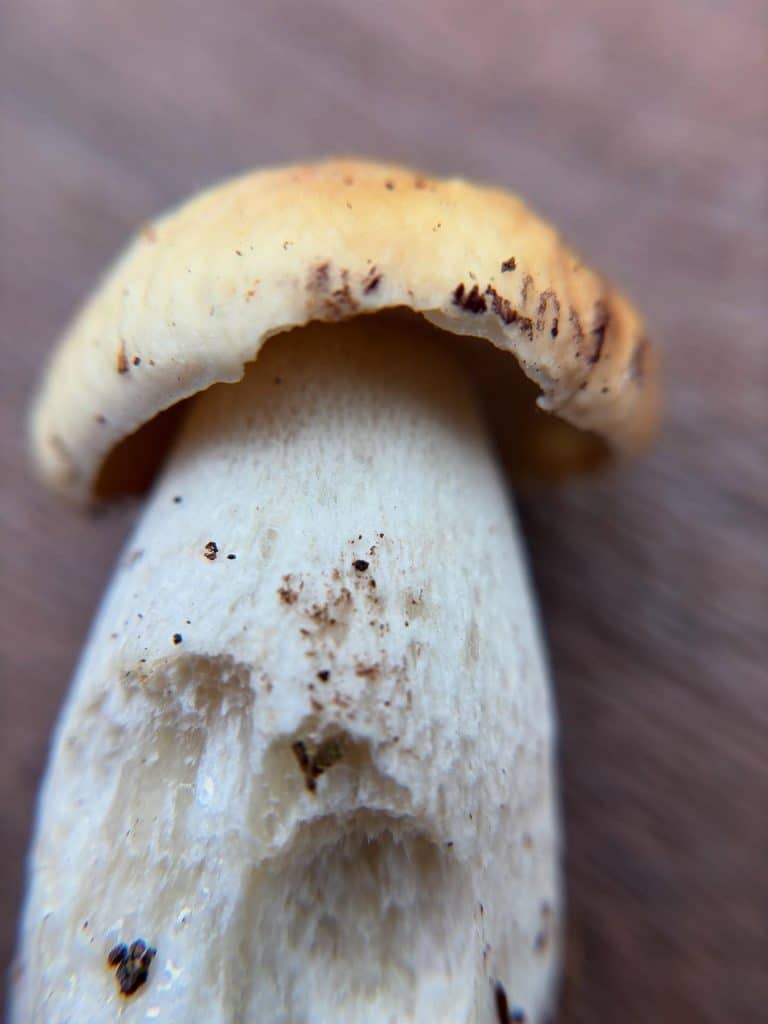
King bolete (Boletus edulis clade) is a group of mushrooms that are the most prized of the bolete mushrooms. King boletes, also known as porcini or penny bun, can grow summer-fall, 1-2 days after a heavy rain. They form mycorrhizal associations with a variety of tree species including pine, spruce, oak, and beech. King boletes […]
Amanita chrysoblema – American Fly Agaric
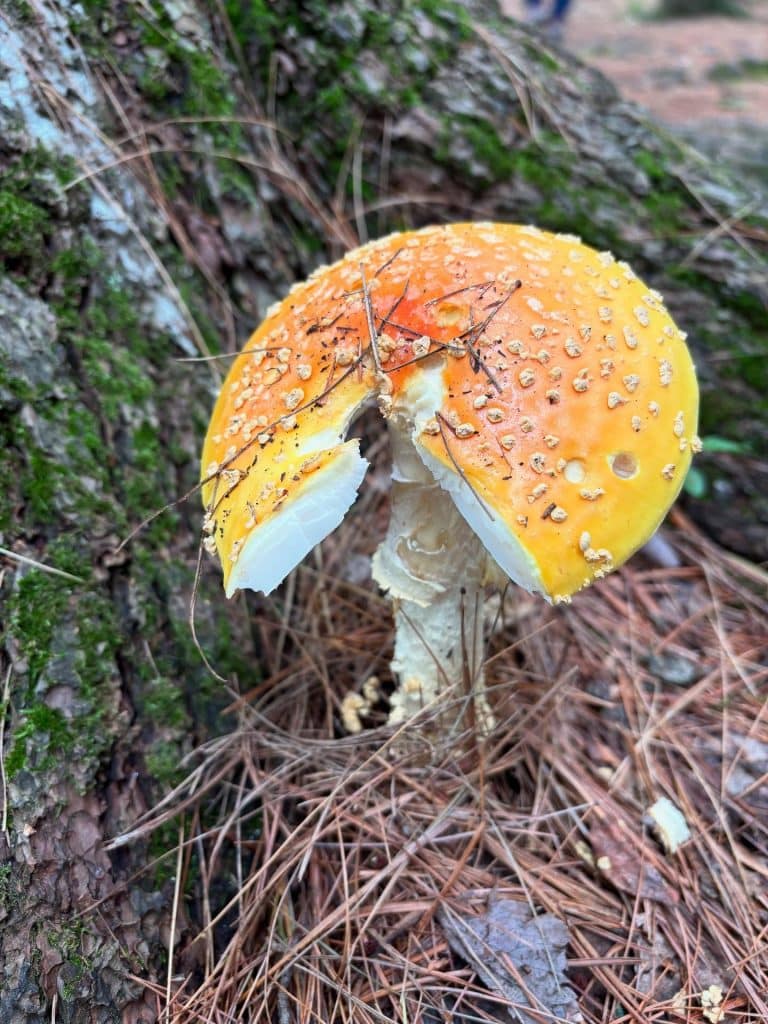
The American Fly Agaric, yellow-orange variant (Amanita chrysoblema) is toxic, psychoactive, or edible depending on preparation. It fruits often in the fall and occasionally in the spring. This species was previously called Amanita muscaria var. guessowii. The American fly agaric is often found growing mycorrhizally with conifers but can also associate with deciduous trees. […]
Suillus weaverae – Butterball Bolete

The butterball bolete (Suillus weaverae) is an edible mushroom that fruits summer-fall. It is often one of the first boletes to fruit. The mushroom has an orange-brown, slippery cap and small glandular dots on the stem. The cap may develop a patchwork pattern as it ages. The pore surface is white at first, becoming yellow […]
Lactarius tabidus – Birch Milkcap
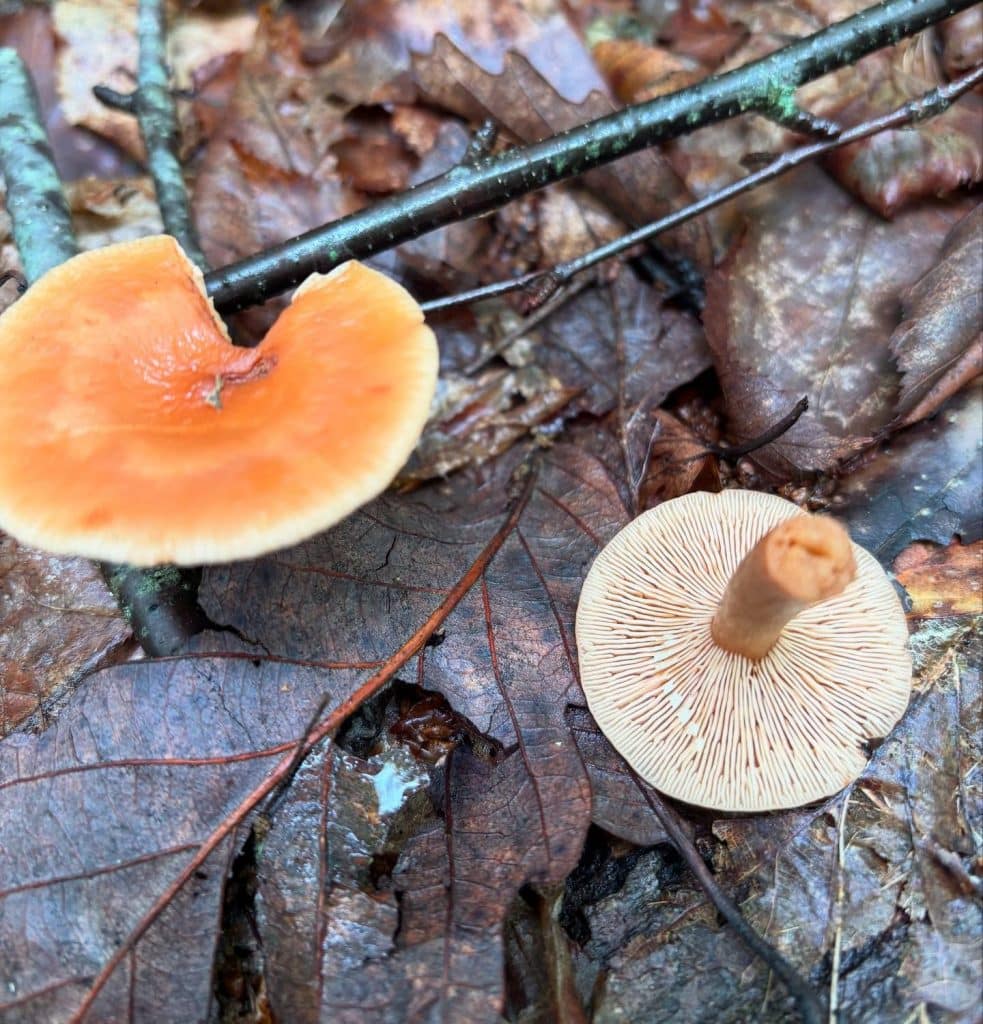
The Birch milkcap (Lactarius tabidus) is an inedible milkcap that fruits occasionally in the spring and more often in the fall next to birch trees. The birch milkcap can be identified by its orange-brown cap that is raised at its center. When the gills are damaged, they produce white latex that turns yellow. The stem […]
Galerina marginata – Deadly Galerina
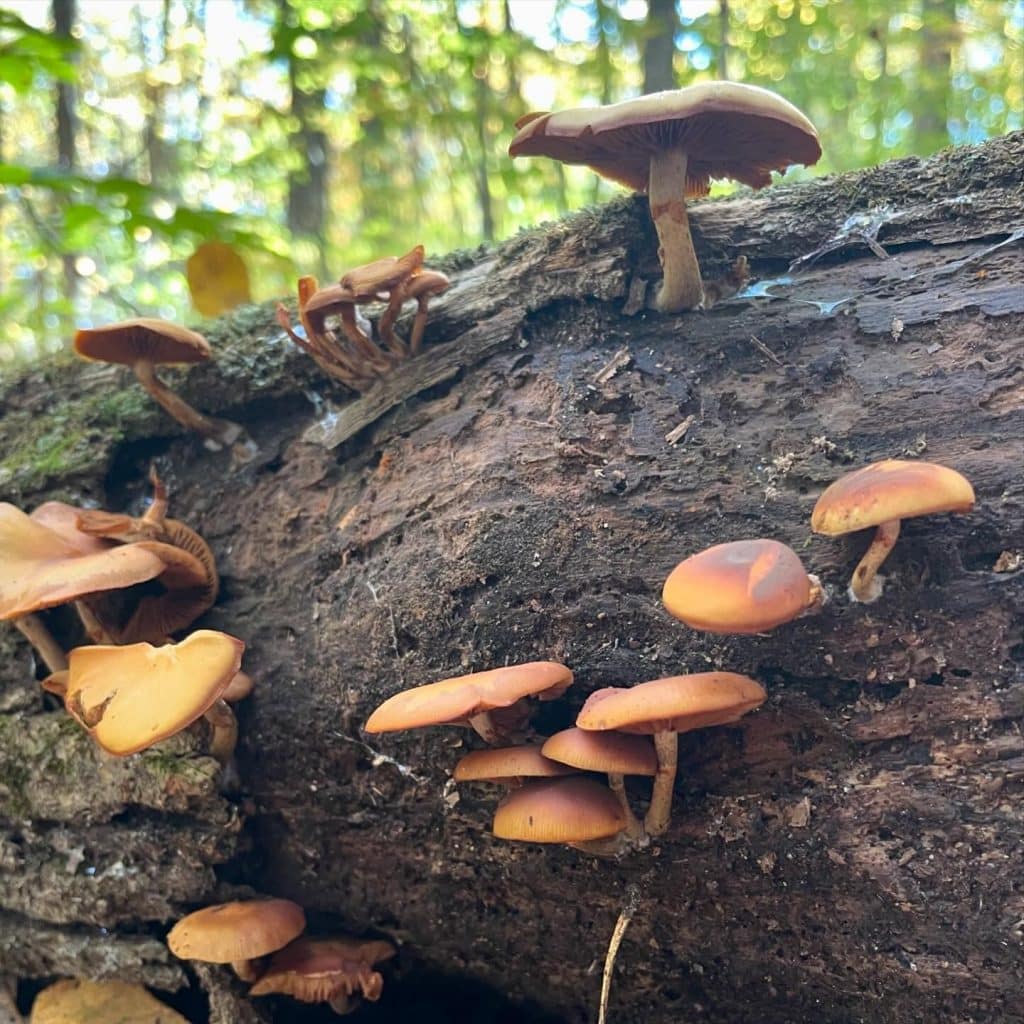
The Deadly Galerina (Galerina marginata) is the deadly toxic look-alike to edible honey mushrooms (Armillaria spp.) and enoki (Flammulina velutipes). The deadly galerina grows scattered or in small clusters on hardwood or conifer logs. It generally fruits June-October. The cap is orange-brown to dark brown and sticky. Gills are yellow, becoming rusty-brown with age. The […]
Chlorociboria spp. – Green Elf Cup
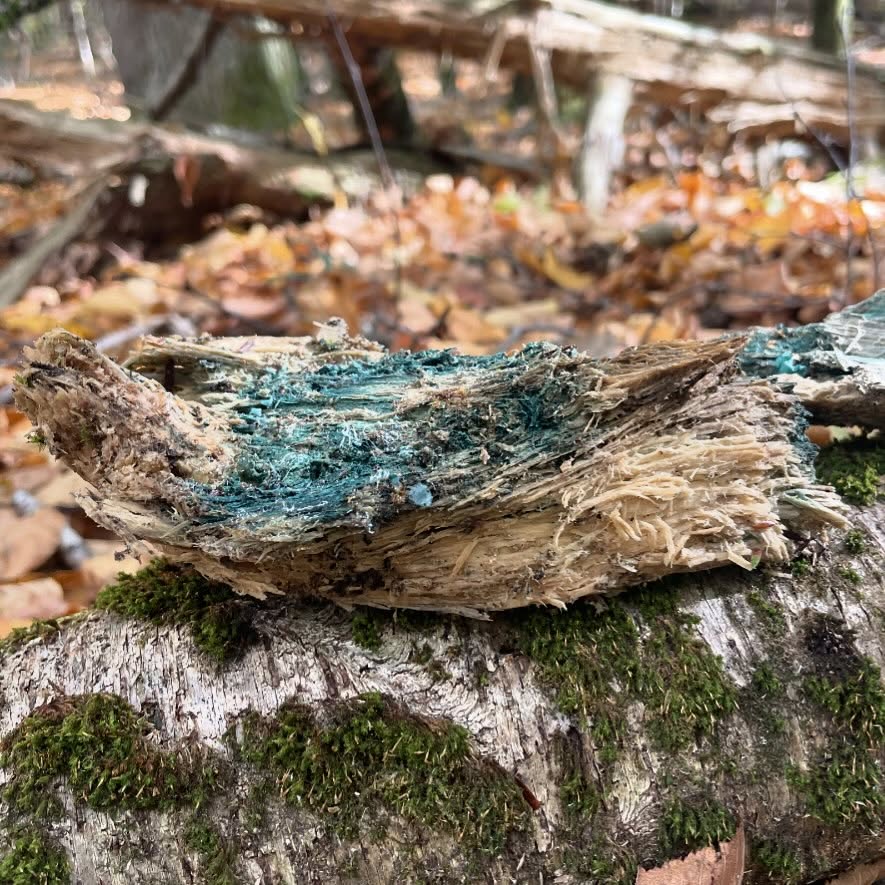
Green elf cup (Chlorociboria spp.) is a small blue-green mushroom that stains wood blue. It can be found from June-November on hardwood logs. It prefers oak wood that is devoid of bark. The green elf cup has small cup-shaped fruiting bodies that are attached to the wood by a stem. The mushrooms are […]
Laetiporus sulphureus – Chicken of the Woods
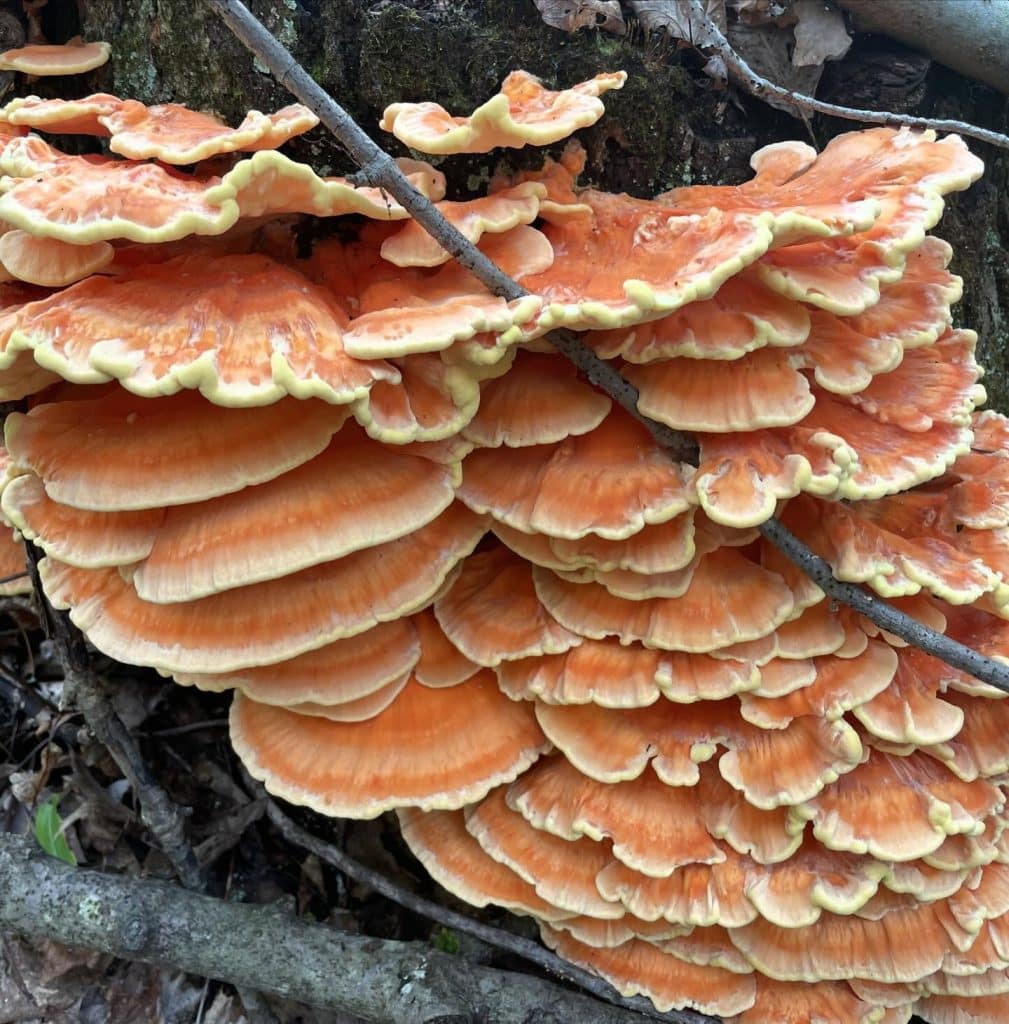
Chicken of the woods (Laetiporus sulphureus) is an edible mushroom that has a flavor and texture that is similar to chicken. Laetiporus sulphureus can be found growing on living or dead hardwood trees from May-November. It has bright orange caps with yellow edges. Pores and flesh are both yellow. Spore print is white. Chicken of […]
Tricholoma “caligatum” complex – False Matsutake
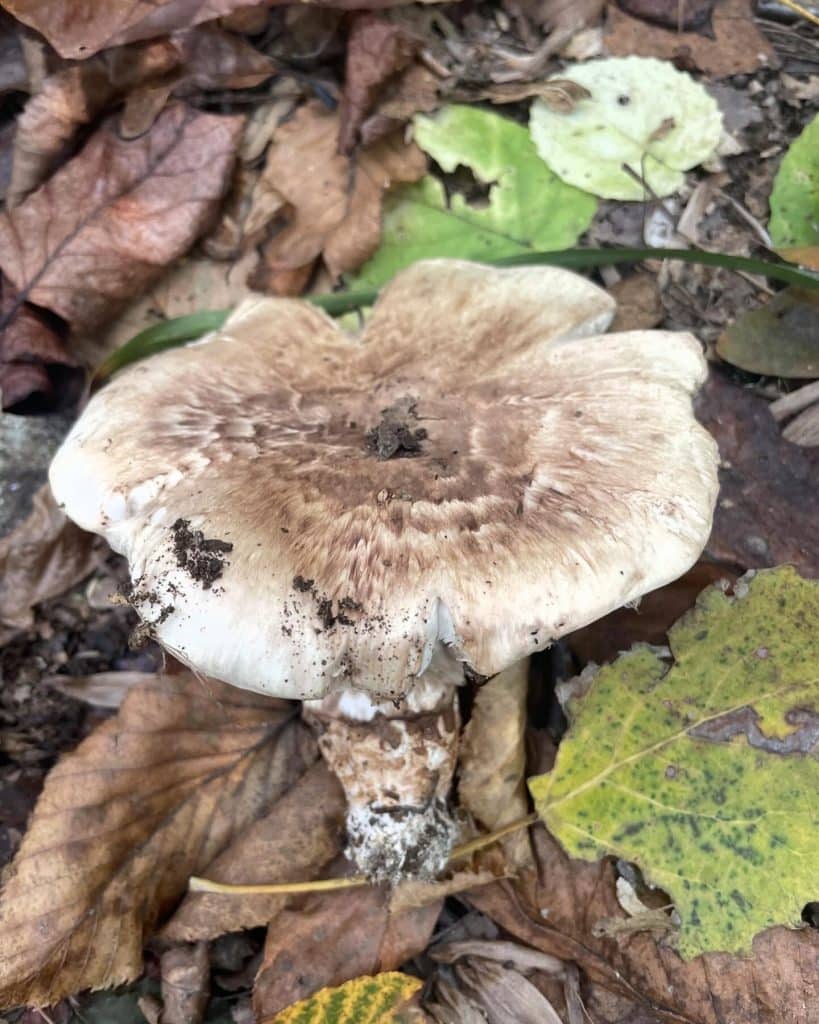
False matsutake (Tricholoma “caligatum” complex) is a group of Tricholoma species that closely resemble the choice edible American matsutake (Tricholoma magnivelare). False matsutake can be found July-October in the northeast. It grows in association with hardwood trees, particularly oaks. False matsutake has a white cap with flat brownish scales. The stem is smooth and white […]
Hericium americanum – Bear’s Head Tooth
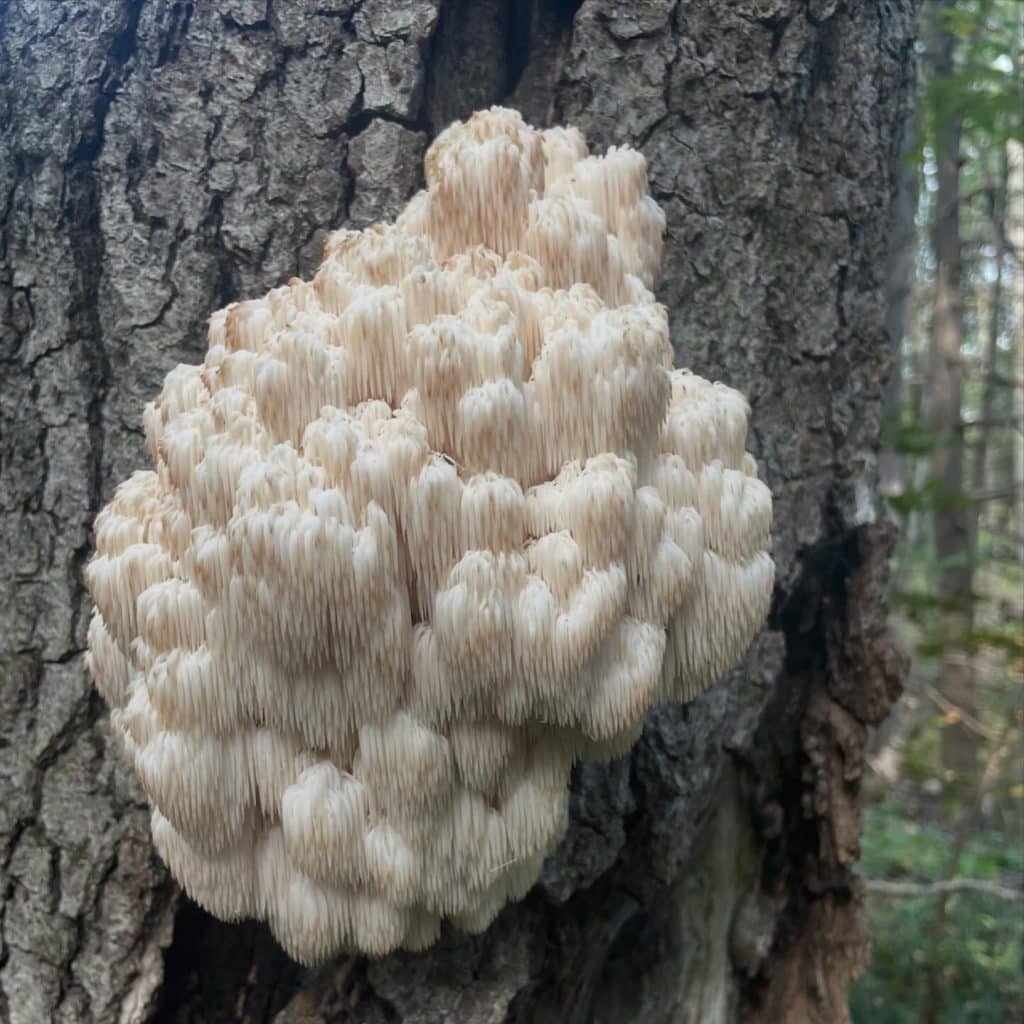
Bear’s head tooth (Hericium americanum) is an edible and medicinal mushroom that is closely related to lion’s mane (Hericium erinceus). It fruits from late August to early November. Bear’s head tooth can be found as a parasite or saprobe on hardwood trees, especially beech, oak, and maple. It is often found in damaged parts of […]
Apioperdon pyriforme – Pear-shaped Puffball
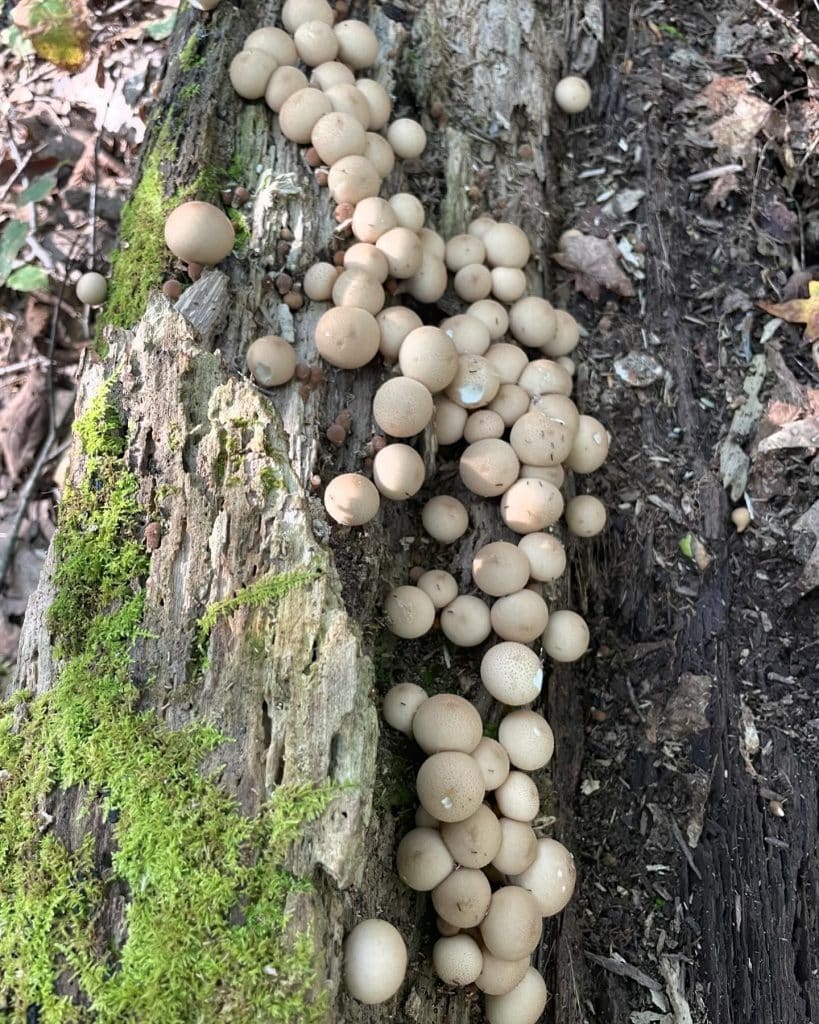
The Pear-shaped puffball (Apioperdon pyriforme) is an edible mushroom that can be found as a decomposer of both coniferous and deciduous trees. It often fruits in large, dense clusters. The pear-shaped puffball can be either pear shaped or spherical. The color ranges from cream to yellowish-brown. This inside is white and marshmallow-like at first, becoming […]
Laccaria ochropurpurea – Purple Laccaria
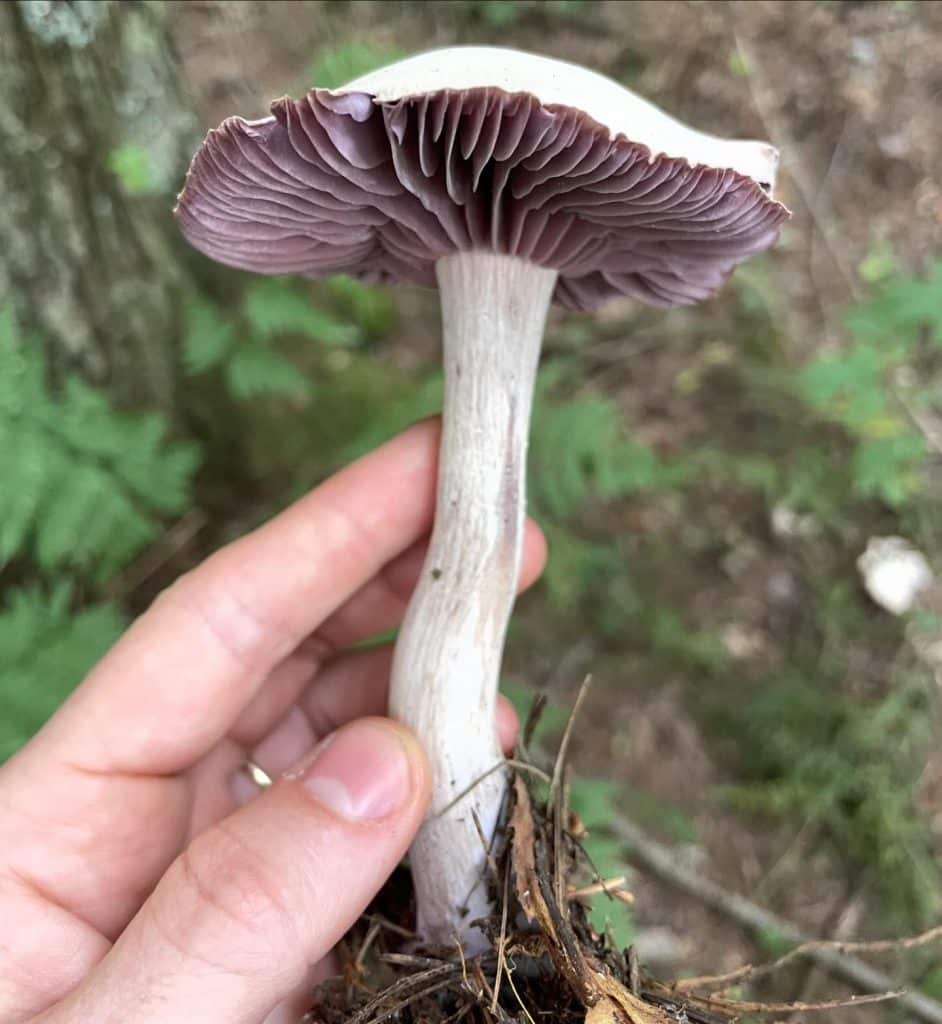
Purple laccaria (Laccaria ochropurpurea) is an edible mushroom that fruits late summer-fall. It can be found in association with hardwood trees, particularly oak and beech, or white pine. Purple laccaria has a cream to violet-gray colored cap. The cap is convex at first, flattening with age. The gills are purple, lightening with age. The fibrous […]
Armillaria mellea – Honey Mushrooms
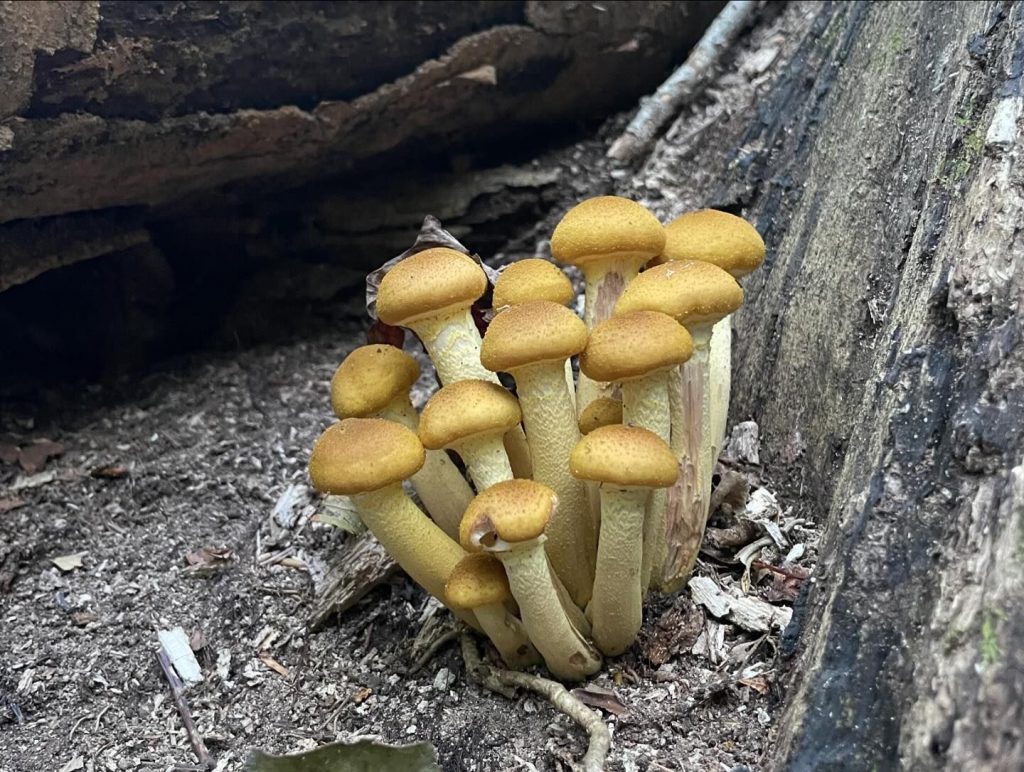
Honey mushrooms (Armillaria mellea) are an edible and medicinal mushroom that fruits late August-November. Honey mushrooms can be parasitic or saprobic. They can grow with a wide variety of tree species, but are commonly found with oak, beech, and fruit trees. They often grow in dense clusters at the base of stumps and trees. The […]
Pleurotus levis
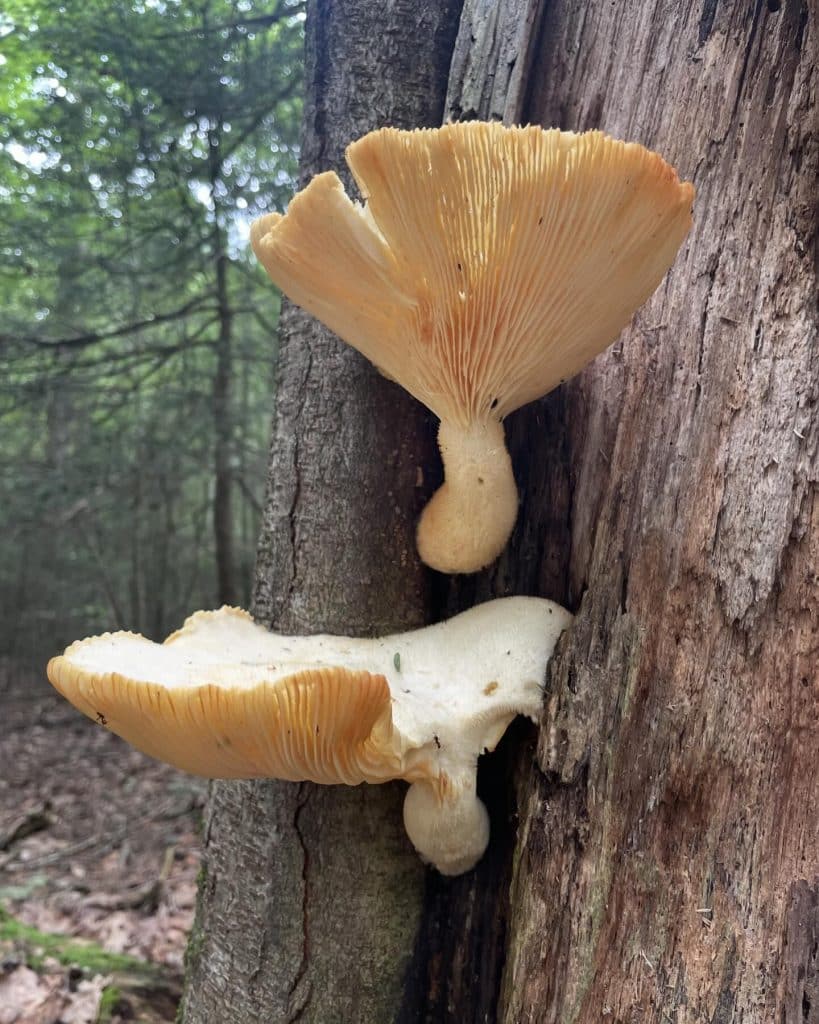
Pleurotus levis is a non-toxic look alike to the choice edible Veiled oyster (Pleurotus dryinus) mushroom. Pleurotus levis can grow on wounds of living trees as a parasite or it can grow on dead wood as a saprobe. The cap is white to cream when young, yellowing with age. Gills are decurrent. The stem can […]
Xanthoconium affine
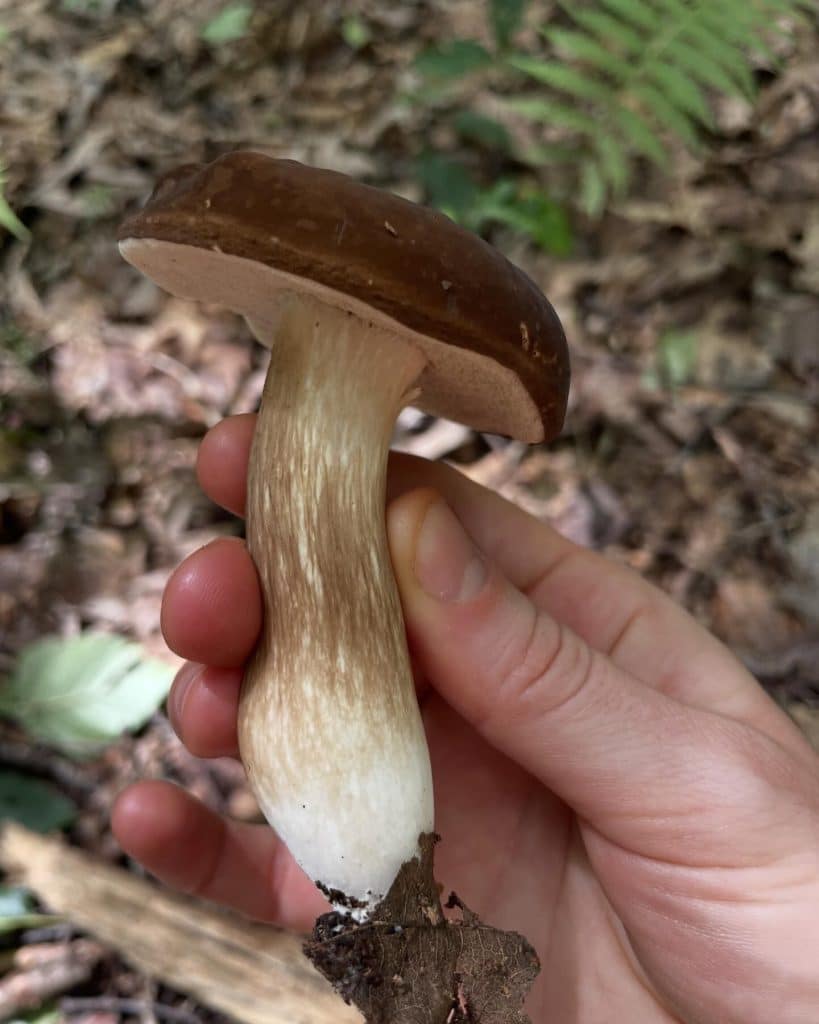
Xanthoconium affine is an edible mushroom that can be found July-October. It is mycorrhizal with hardwood trees, especially beech and oak. The cap is dark brown or reddish-brown, turning yellowish-brown. Pores are white, becoming pale yellow. The mushroom does not stain blue. The stem is streaked with a color that is paler than the cap. […]
Strobilomyces sp. – Old Man of the Woods
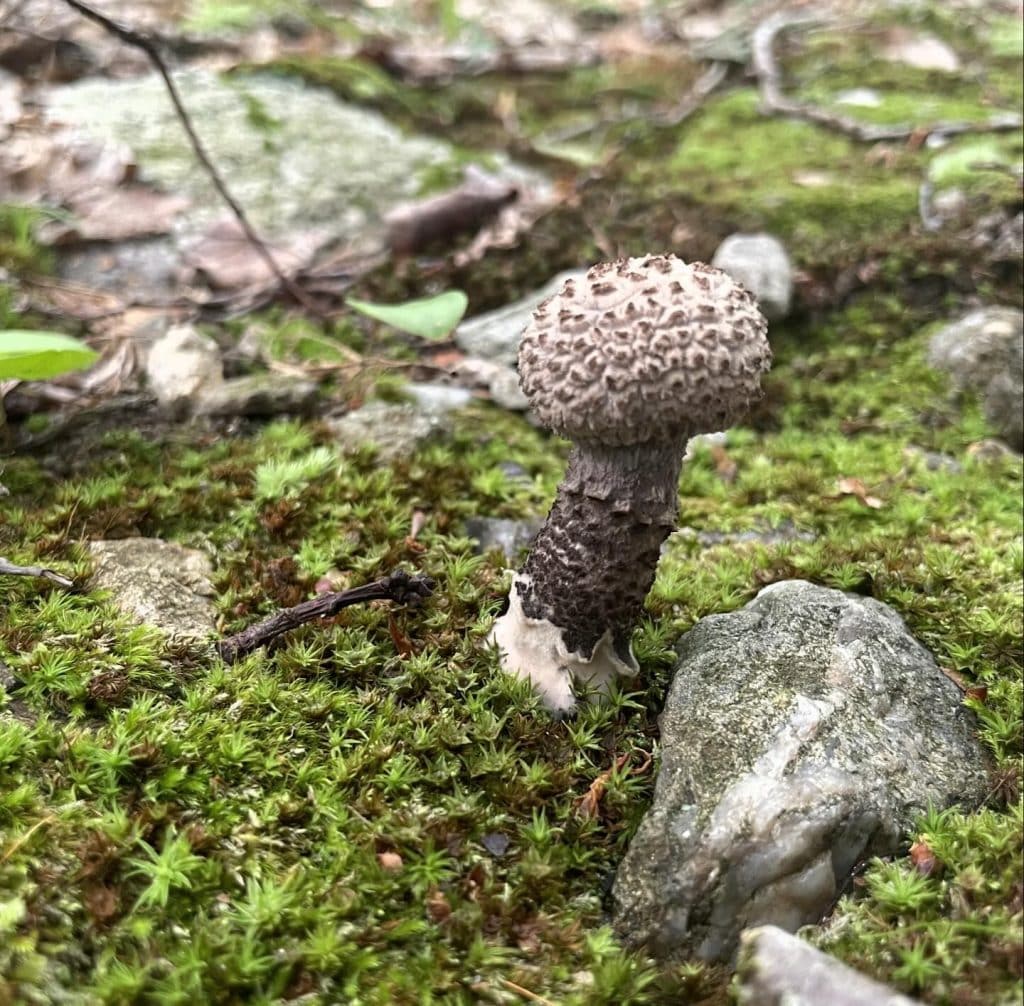
The Old Man of the Woods (Strobilomyces sp.) is an edible mushroom that fruits June-October. It can be found growing singularly or clustered in mixed hardwood or conifer forests. The cap and stem are gray to black and shaggy. Pores start off white, then turn gray and eventually black with age. Flesh turns reddish when […]
Suillus spraguei – Painted Suillus
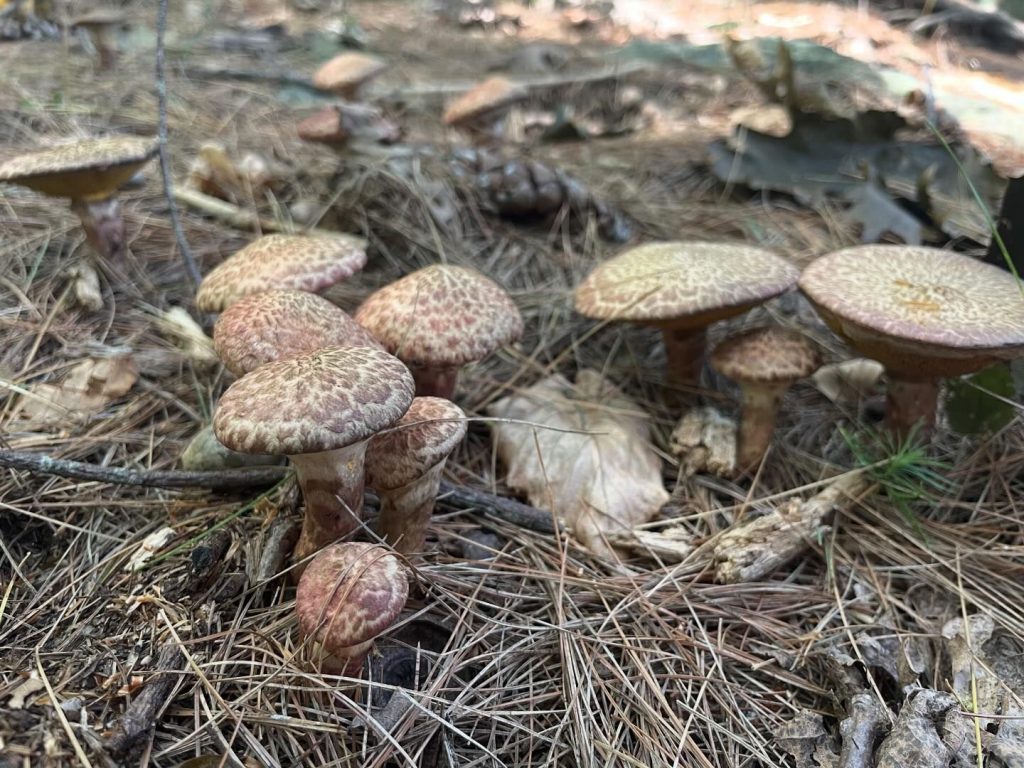
The Painted Suillus (Suillus spraguei) is an edible mushroom that can be found in conifer forests from June-October. The mushroom grows scattered or clustered in the ground. It is a mycorrhizal mushroom that often associates with pine. The Painted Suillus has a unique scaly red cap and stem. The yellow pores are covered by a […]
Tylopilus ferrugineus
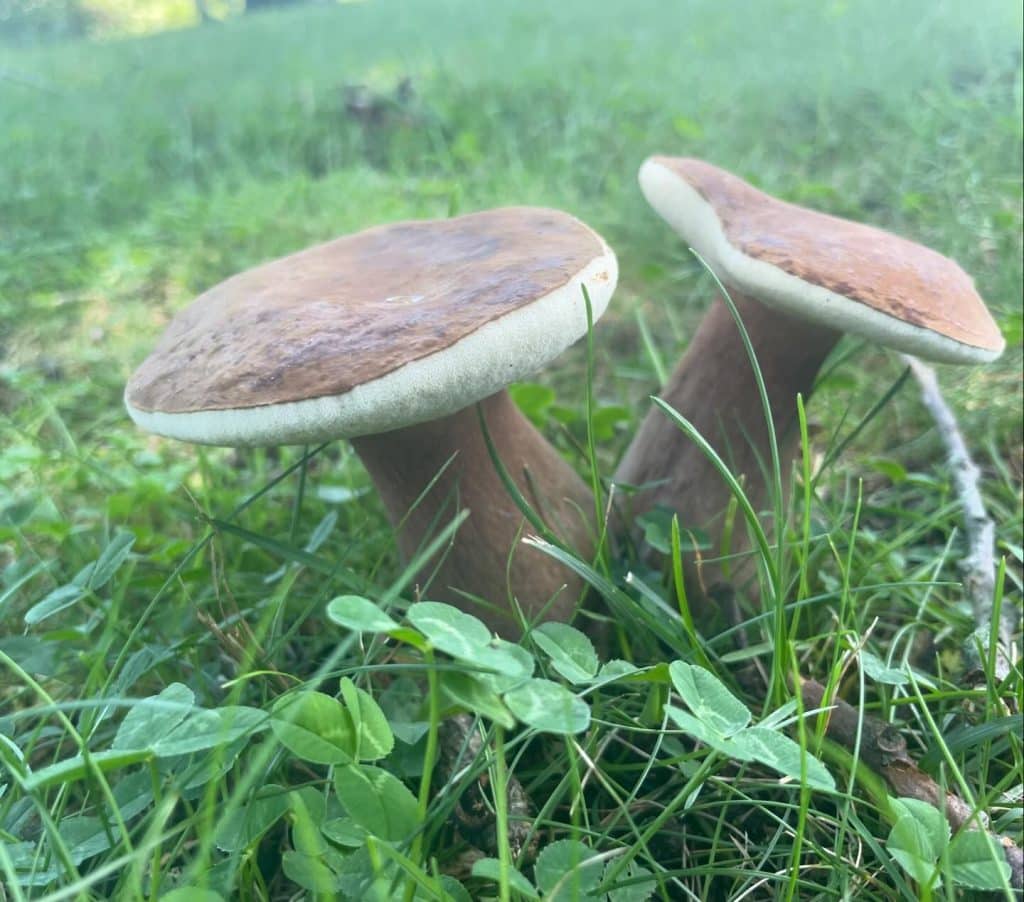
Tylopilus ferrugineus is an edible mushroom that is native to eastern North America. It fruits July-September. The mushroom is often found in grassy areas in association with oak or beech. The cap and stem are brown. The pores are white and stain brown. Young mushrooms have club-shaped stems and very firm flesh. Spore print is […]
Xerocomus illudens
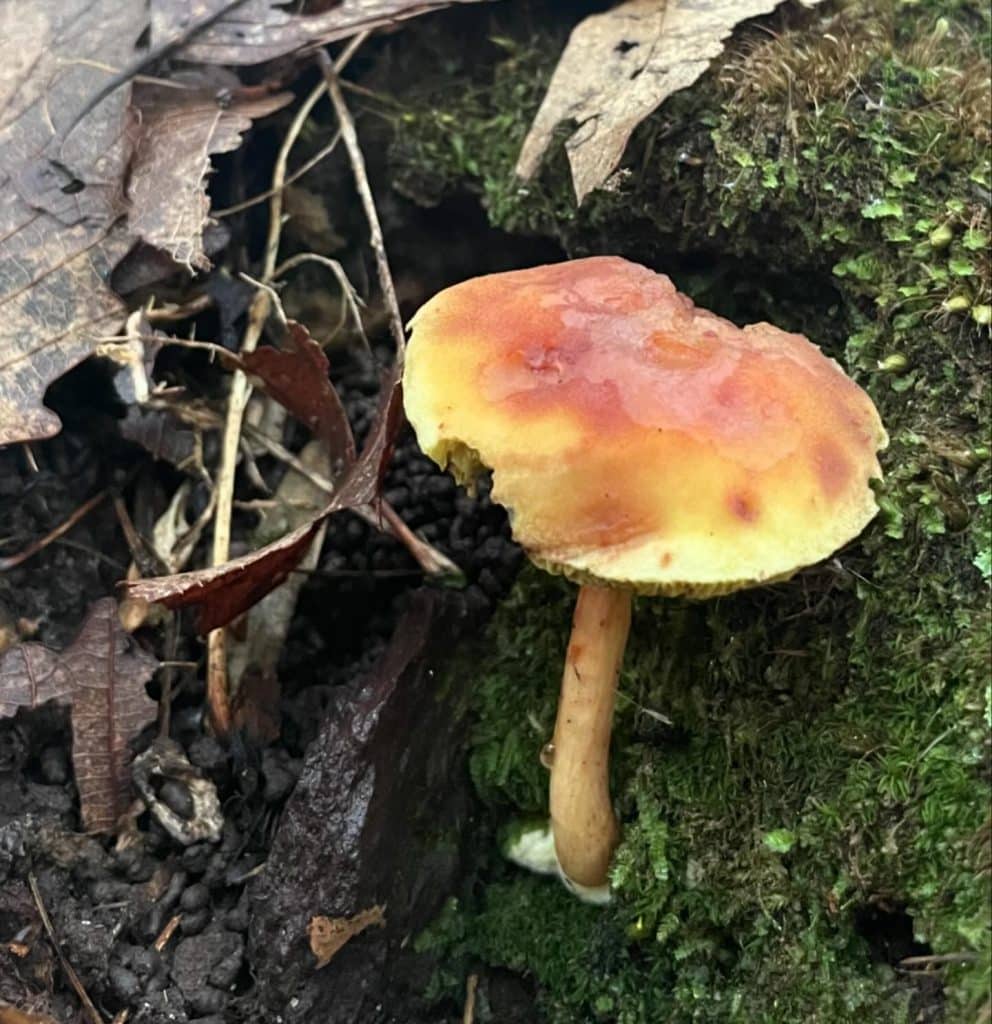
Xerocomus illudens is an edible bolete that fruits July-October. It forms mycorrhizal relationships with oaks and possibly other hardwoods. The cap is cinnamon-brown or pinkish-cinnamon colored. The pores are lemon yellow and angular. The flesh is pale yellow and does not stain blue. The stem is mustard-yellow and has a course net. Spore print is […]
Macrolepiota procera – Parasol Mushroom
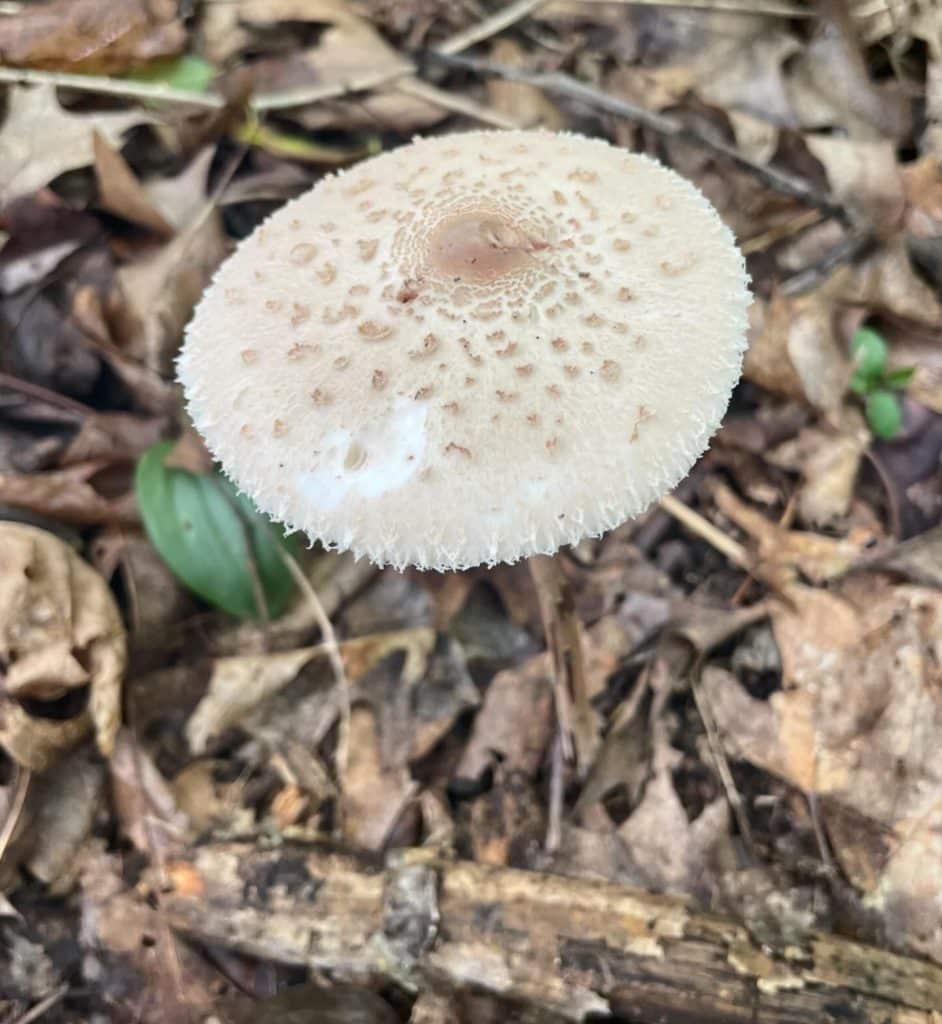
The Parasol mushroom (Macrolepiota procera) is an edible mushroom that fruits August-October. It can be found in open woodlands near conifers or hardwoods or on lawns. The parasol mushroom is saprobic. The cap has scattered brown scales and develops a rounded bump on the center. The stem is slender, tall, and bulbous at the base. […]
Sarcodon imbricatus – Scaly Hedgehog
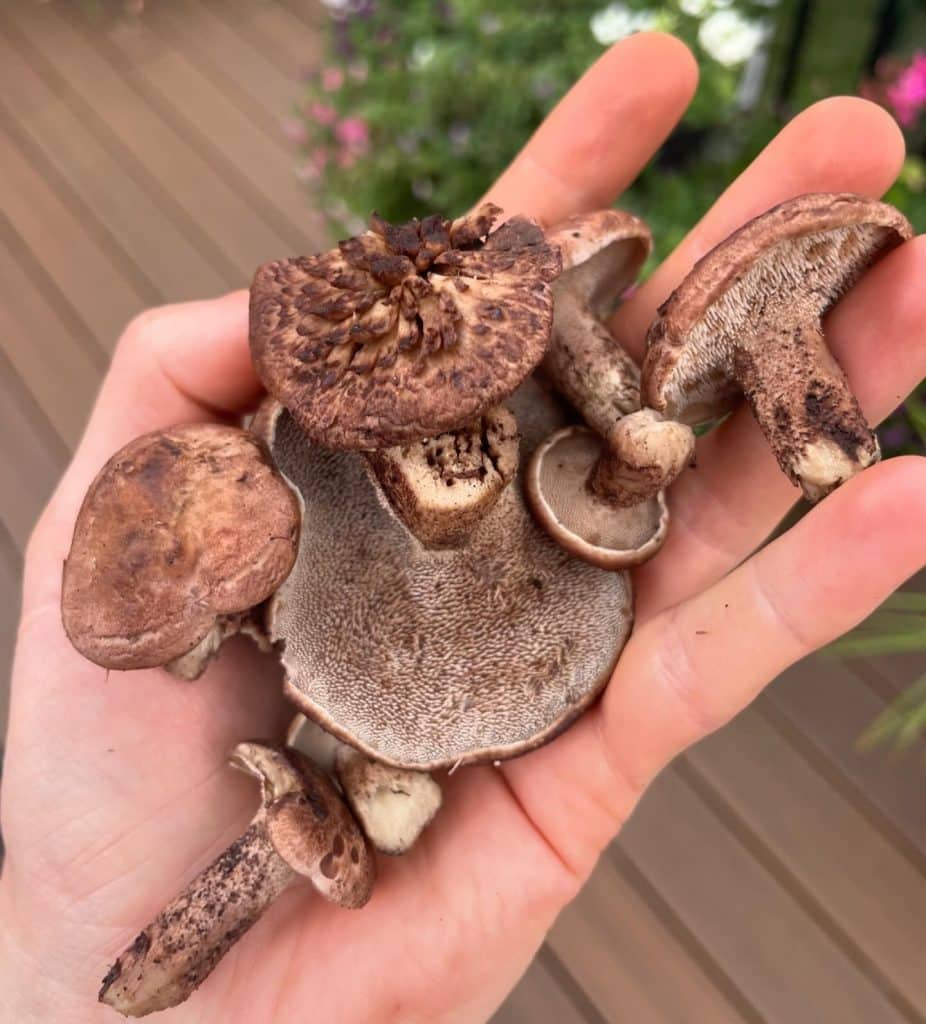
The Scaly Hedgehog (Sarcodon imbricatus) is an edible, but often bitter mushroom that can be found July-November. It grows in the ground near water or in hilly areas. The mushroom is often found growing near conifers, especially spruce. The scaly hedgehog, also known as “Hawk’s wing”, has raised brownish scales on its cap. Under the […]
